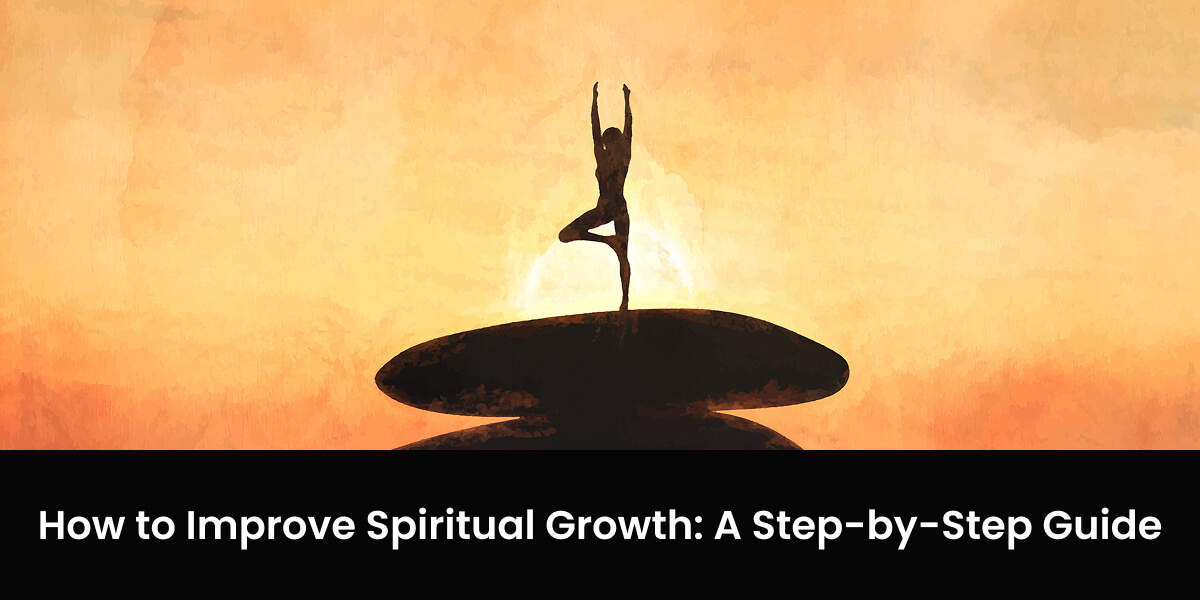Definition of Mantras
Mantras, deeply ingrained in various spiritual and religious traditions, hold multifaceted significance transcending mere words or phrases. Rooted in ancient scriptures and passed down through generations, mantras encompass sacred sounds, syllables, or phrases believed to possess profound spiritual vibrations. These utterances are revered for their transformative qualities, aligning practitioners with cosmic energies, facilitating meditation, and fostering spiritual growth.
At their core, mantras are more than linguistic elements; they are vehicles of resonance, encapsulating potent vibrations that resonate within the practitioner’s being. Often regarded as instruments of the mind, mantras harness sound vibrations to evoke spiritual energies, uplift consciousness, and channel divine forces. Their essence lies not just in the recitation but in the intention, focus, and spiritual connection established during their repetition.
The significance of sound in spirituality
The significance of sound in spirituality traverses diverse traditions, attributing immense power to vibrations and auditory experiences. Sound, considered a fundamental aspect of the universe’s creation, holds a pivotal role in spiritual practices worldwide. Across cultures, the belief in the transformative potential of sound as a catalyst for spiritual awakening remains prevalent.
The Significance of Sound in Spirituality:
- Vibrational Resonance: Sound vibrations are believed to resonate with the energies of the universe, impacting the physical, mental, and spiritual realms.
- Meditative Focus: The repetition of sound, such as mantras, aids in concentration, fostering a meditative state by anchoring the mind and transcending worldly distractions.
- Energetic Healing: Certain sounds or frequencies are thought to have healing properties, influencing energy centers within the body and promoting holistic well-being.
- Divine Connection: Sound serves as a bridge to connect practitioners with divine forces or higher consciousness, facilitating a deeper spiritual connection.
- Manifestation and Intention: Chants and affirmations, backed by intention and belief, are perceived as tools to manifest desires or align with spiritual goals through sound’s vibrational power.
Philosophical roots of mantra practice
Mantra practice finds its philosophical roots deeply embedded in ancient spiritual philosophies, particularly within the realms of Hinduism, Buddhism, and other contemplative traditions. These roots extend back to the foundational beliefs about the nature of reality, consciousness, and the cosmic order articulated in various sacred texts and philosophical treatises.
Within Hindu philosophy, mantras are considered vehicles to access and manipulate cosmic energies. They derive from the Vedic scriptures, where the universe is seen as a manifestation of sound or vibration (Shabda Brahman). The power of mantras is believed to tap into this primordial vibration, aligning practitioners with the divine and invoking transformative energies.
Buddhist philosophy also embraces mantra practice, viewing mantras as expressions of enlightened beings’ essence. The repetition of mantras, particularly in Tibetan Buddhism, is a means to embody the qualities and energies of specific deities or enlightened states of consciousness, fostering spiritual growth and realization. These practices align with the philosophical tenets of emptiness and compassion within Buddhist thought.
Cultural and Religious Diversity in Mantra Traditions
Mantra traditions span across a rich tapestry of cultures and religions, reflecting the diverse spiritual expressions and beliefs embraced globally. While mantras are integral to Hindu and Buddhist practices, their resonance extends beyond these traditions, finding resonance in Christianity, Islam, Sikhism, and various indigenous spiritualities.
In Hinduism, mantras form an integral part of spiritual rituals, meditation, and devotion. From the ancient Vedas to modern Hindu practices, mantras are revered for their potency in invoking deities, aligning practitioners with cosmic energies, and facilitating spiritual evolution.
Similarly, Buddhism incorporates mantras, particularly in Tibetan and Vajrayana traditions, where they serve as vehicles for enlightenment and transformation. Mantras are recited as part of meditation practices, aimed at embodying the qualities of enlightened beings and cultivating spiritual virtues.
Beyond Eastern traditions, Christianity includes repetitive prayers, such as the Jesus Prayer or the Rosary, reflecting mantra-like practices that aid in contemplation and spiritual connection. Islamic traditions incorporate Zikr, the repetition of sacred phrases, as a means of remembrance and spiritual elevation.
Sikhism embraces the power of Shabad Kirtan, hymns or chants from the Guru Granth Sahib, considered transformative in connecting with divine wisdom and evoking spiritual ecstasy.
Indigenous cultures worldwide have their own sacred chants, songs, or prayers embodying similar principles, aligning practitioners with nature’s rhythms, invoking spirits, and fostering communal connections. This diversity underscores the universality of sound and its role in spiritual practices across humanity.
Types of Mantras
Mantras manifest in various forms, each serving distinct purposes and embodying unique energies within spiritual practices. These types of mantras range from those focused on deities and divine energies to those aimed at healing, transformation, and spiritual elevation. Each type resonates with specific intentions, guiding practitioners along their spiritual journey.
1. Bija Mantras: Bija, meaning seed, are elemental or seed mantras that represent fundamental energies or aspects of the divine. Short and potent, these mantras are said to contain the essence of larger concepts or deities.
2. Deity Mantras: These mantras are dedicated to specific deities, embodying their energies, qualities, or attributes. Devotees chant these mantras to invoke the presence, blessings, and protection of the respective deity.
3. Healing Mantras: Healing mantras focus on promoting physical, emotional, or spiritual well-being. Their vibrations are believed to harmonize energies within the body, fostering healing and restoration.
4. Tantric Mantras: Tantric mantras emphasize the transformative aspects of spirituality. These mantras often include Bijas and aim to awaken Kundalini energy, leading to spiritual awakening and higher consciousness.
5. Guru Mantras: Revering spiritual teachers or gurus, these mantras are seen as channels to connect with the wisdom and guidance passed down through lineages. They symbolize the guru’s blessings and teachings.
6. Pranava Mantras: The Pranava or primordial sound mantras, such as “Om” or “Aum,” symbolize the essence of the universe. Chanting these mantras aligns practitioners with cosmic energies, fostering spiritual connectivity and awakening.
Benefits of Chanting Mantras
Chanting mantras is believed to offer a myriad of spiritual, mental, and physical benefits, drawing upon the vibrational resonance and transformative power of sound. These benefits extend beyond specific religious or cultural contexts, appealing to seekers across various spiritual paths. Embracing mantra chanting as a spiritual practice is said to usher practitioners into a realm of profound inner transformation and connection with higher consciousness.
Benefits of Chanting Mantras:
- Stress Reduction: Chanting mantras induces a meditative state, aiding in stress relief by calming the mind and promoting relaxation.
- Enhanced Focus and Concentration: Regular chanting cultivates mental clarity, improving focus, and enhancing cognitive abilities.
- Spiritual Upliftment: Mantra chanting fosters spiritual growth, deepening one’s connection with the divine, and elevating consciousness.
- Physical Well-being: Some mantras are associated with healing energies, believed to promote physical health and well-being.
- Emotional Balance: Mantra practice can bring emotional stability, fostering positivity, and inner peace by harmonizing emotions.
The Science Behind Mantras
The science behind mantras delves into the intricate relationship between sound vibrations and their impact on the human mind, body, and consciousness. Modern research increasingly acknowledges the potential physiological and psychological effects of chanting, offering insights into the scientific underpinnings of mantra practices that ancient traditions have embraced for millennia.
Studies suggest that repetitive chanting, particularly of specific sounds or phrases, can induce a state of focused attention akin to meditation. This practice is associated with reduced activity in the brain’s default mode network, leading to a sense of relaxation, reduced stress, and increased mental clarity. Furthermore, chanting mantras is believed to stimulate the vagus nerve, which regulates various bodily functions, contributing to a sense of well-being and calmness.
Moreover, the rhythm and resonance of chanting are thought to have an impact on heart rate variability, potentially influencing cardiovascular health. Some studies also explore the effects of sound vibrations on cellular structures, proposing that certain frequencies might affect cellular functions and energy levels, thereby contributing to overall health and vitality.
While the scientific exploration of mantras continues to evolve, these findings highlight the potential therapeutic and wellness benefits of sound-based practices, shedding light on the physiological mechanisms underlying the ancient practice of chanting mantras for holistic well-being.
Practical Guide to Chanting Mantras
Embarking on a journey of mantra chanting involves embracing a mindful and dedicated approach, integrating this spiritual practice into daily life for its transformative potential. A practical guide to chanting mantras encompasses various techniques, rituals, and considerations that facilitate an enriching and meaningful experience for practitioners.
Practical Guide to Chanting Mantras:
1. Set Intentions: Clarify your intentions and goals for chanting, whether it’s spiritual growth, healing, stress relief, or mindfulness. Setting clear intentions amplifies the practice’s effectiveness.
2. Choose a Mantra: Select a mantra that resonates with you spiritually or aligns with your intentions. It could be a traditional mantra, a verse from sacred texts, or a personal affirmation.
3. Create a Sacred Space: Establish a serene environment conducive to chanting. It could be a quiet corner at home or a space adorned with meaningful elements that enhance your connection to the practice.
4. Regular Practice: Consistency is key. Dedicate a specific time daily for chanting, allowing the practice to become a part of your routine.
Mindful Chanting: Focus on pronunciation, rhythm, and the resonance of the mantra. Allow the sound vibrations to reverberate within, fostering a meditative state.
How to Integrating Mantra Practice into Daily Routines?
Integrating mantra practice into daily routines involves weaving this spiritual exercise seamlessly into the fabric of everyday life, allowing its transformative essence to permeate various activities and moments throughout the day. Embracing mantras as a continuous thread within the daily rhythm nurtures spiritual growth and inner harmony.
How to Integrate Mantra Practice into Daily Routines:
- Morning Ritual: Incorporate chanting mantras into your morning routine, aligning with the rising sun to infuse your day with positive vibrations and spiritual energy.
- Mindful Activities: Integrate mantras during mundane tasks like walking, cooking, or cleaning. Chanting silently or softly while performing these activities enhances mindfulness and inner focus.
- Commute or Travel: Utilize travel time to chant mantras. Whether driving, commuting, or on public transport, engage in silent chanting or recitation to create a peaceful atmosphere.
- Midday Reset: Take brief breaks during the day to chant mantras, rejuvenating your energy, and realigning with your spiritual intentions.
- Evening Reflection: Incorporate chanting into evening rituals, reflecting on the day’s events or expressing gratitude through mantra practice before bedtime.
The Future of Mantras
The future of mantras is poised to witness a harmonious blend of ancient wisdom and modern exploration. As scientific research delves deeper into the effects of sound vibrations on well-being, the potential therapeutic applications of mantras are likely to garner more attention. Moreover, in a global landscape that embraces diverse spiritual practices, mantras may serve as unifying threads, transcending cultural boundaries to foster inner peace, mindfulness, and spiritual connection among individuals worldwide.
Conclusion
In the symphony of spiritual practices, mantras stand as timeless melodies resonating across generations. Their significance goes beyond mere words or sounds, offering pathways to inner transformation and connectivity with higher realms. As seekers continue to explore the depths of their own consciousness, the resonance of mantras is poised to echo through time, guiding souls towards enlightenment, harmony, and spiritual elevation.









Post a Comment